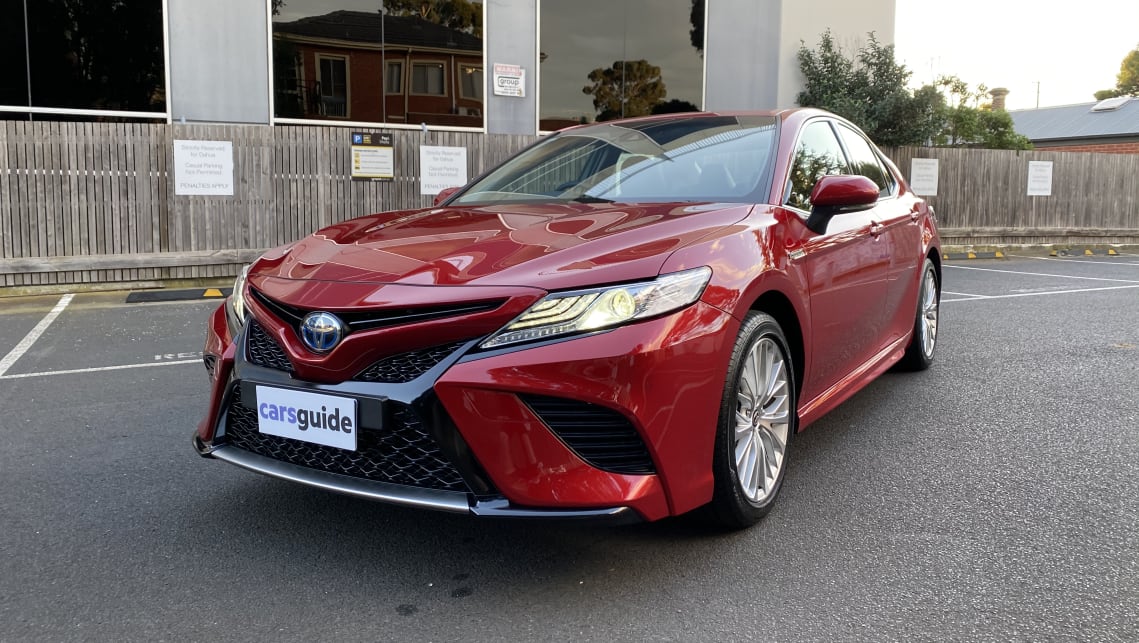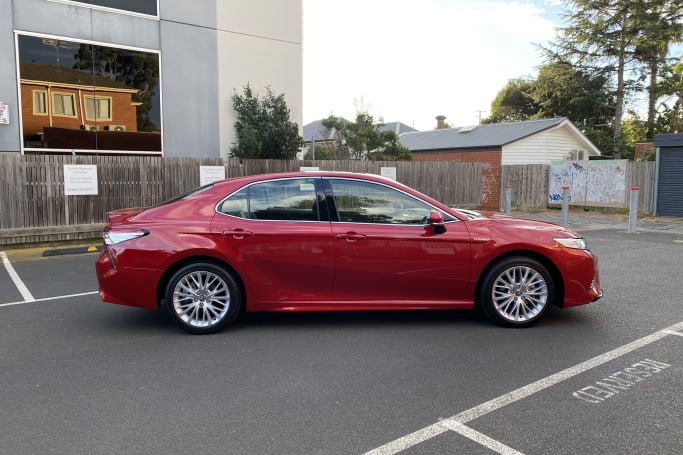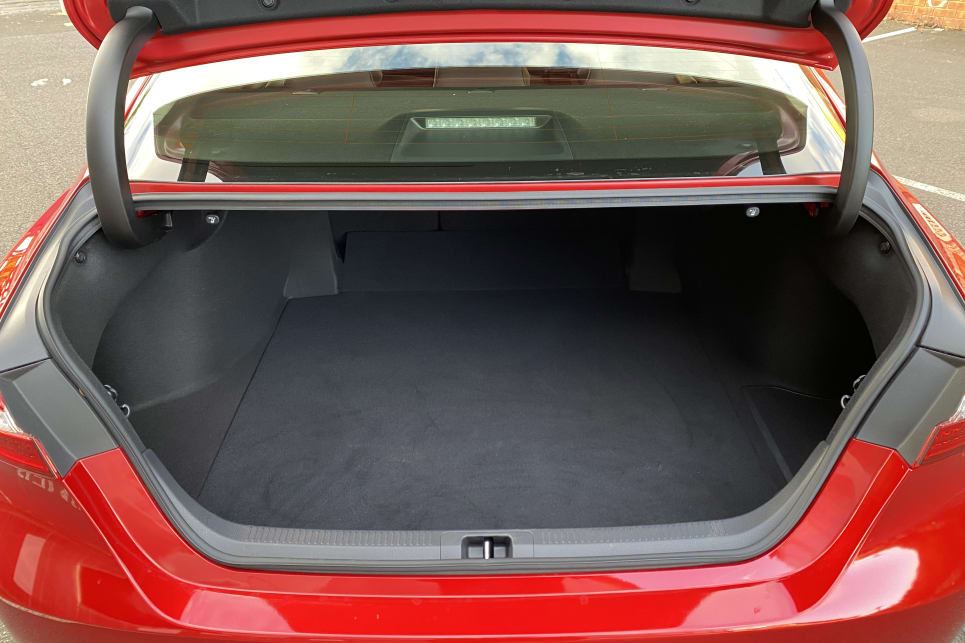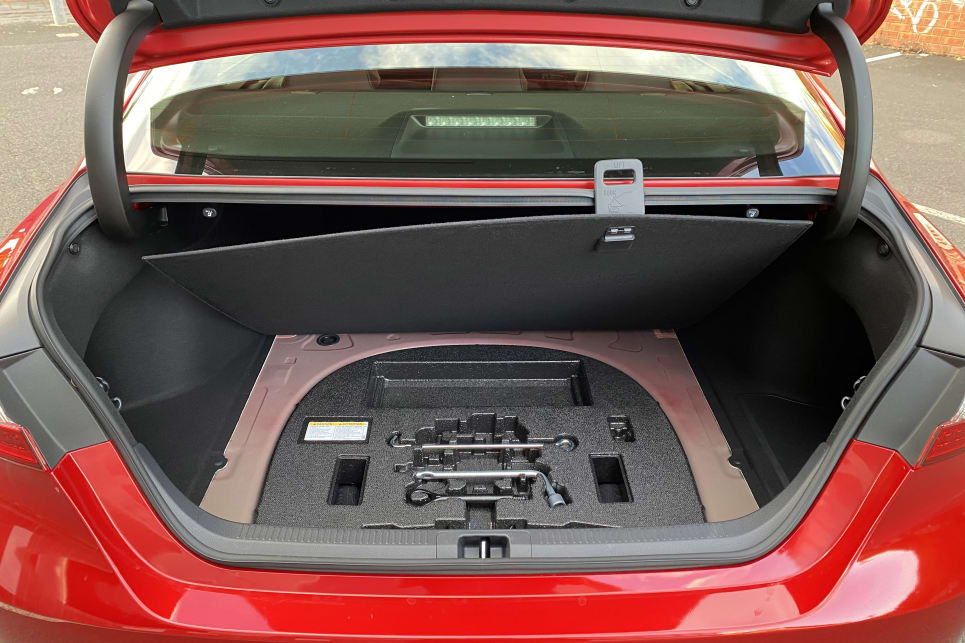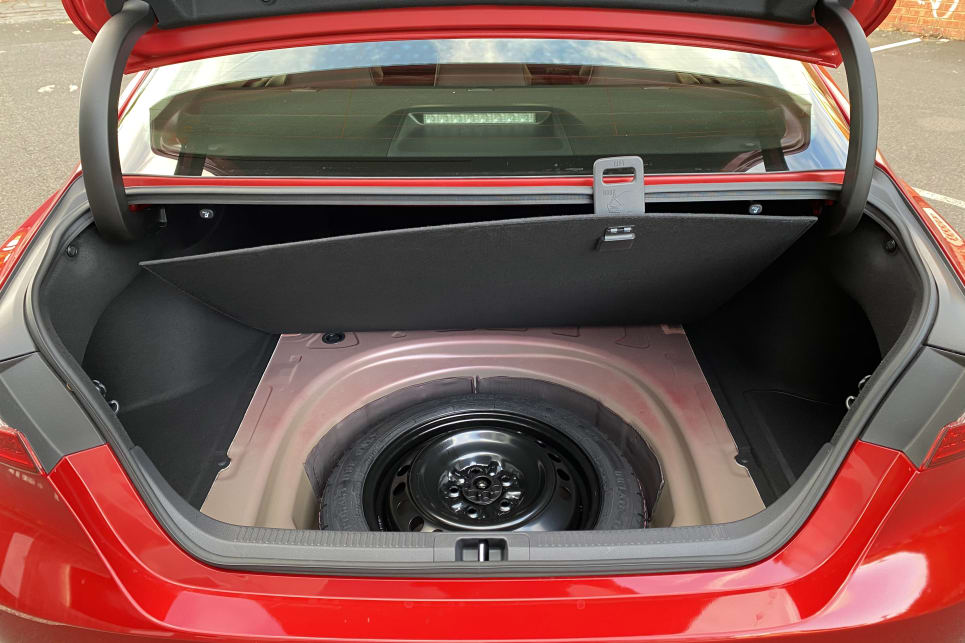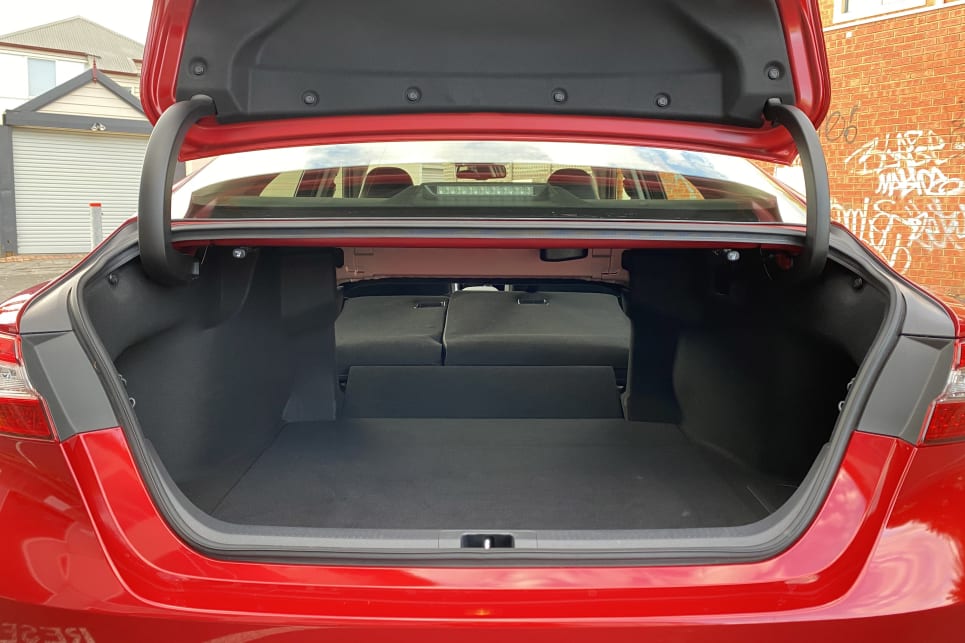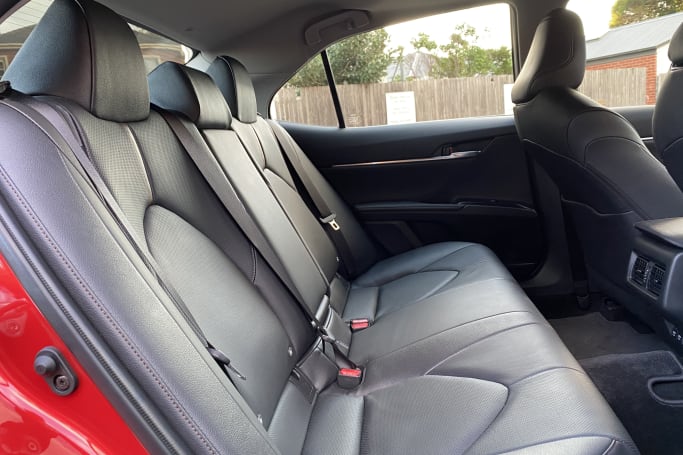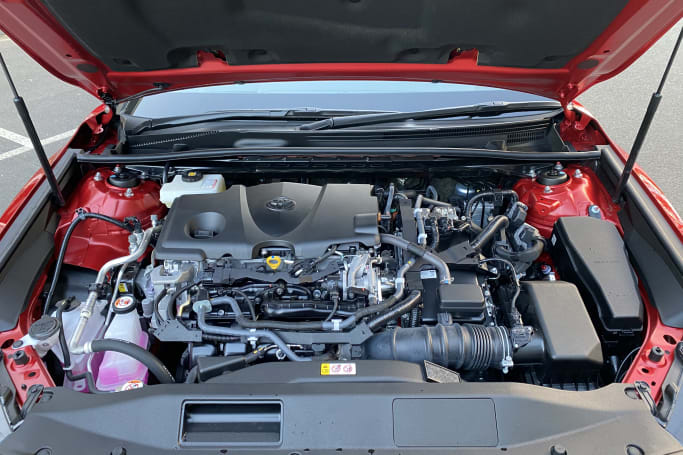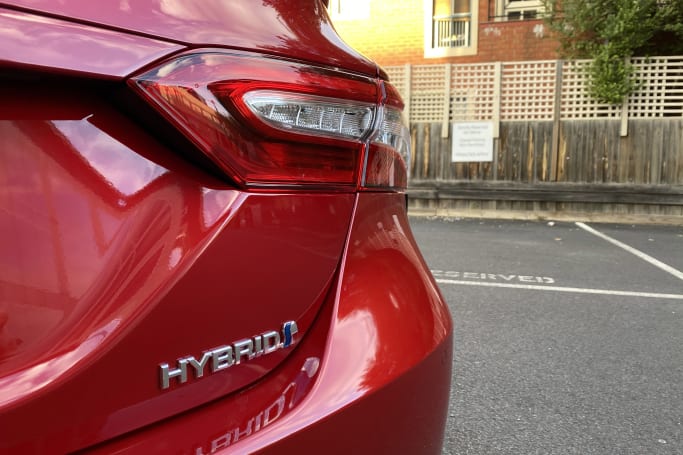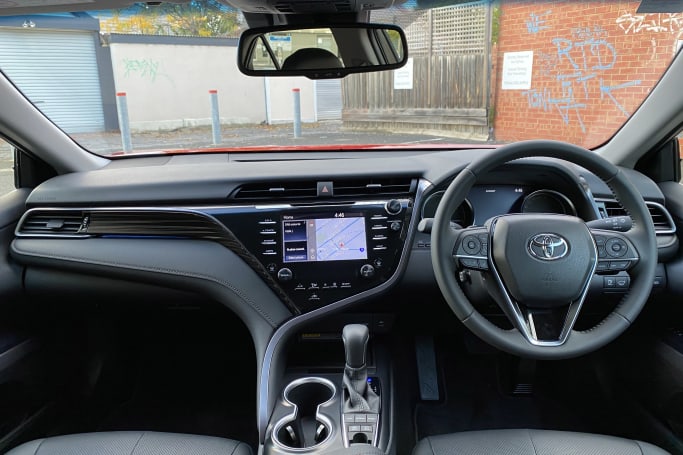Not that long ago most people thought the Camry was white goods on wheels, but the narrative has well and truly changed.
The SL hybrid is more striking than most, with the eyes immediately drawn to its high-gloss 'Sports' grille, which is certainly bold thanks to its large size, X shape and prominent mesh insert.
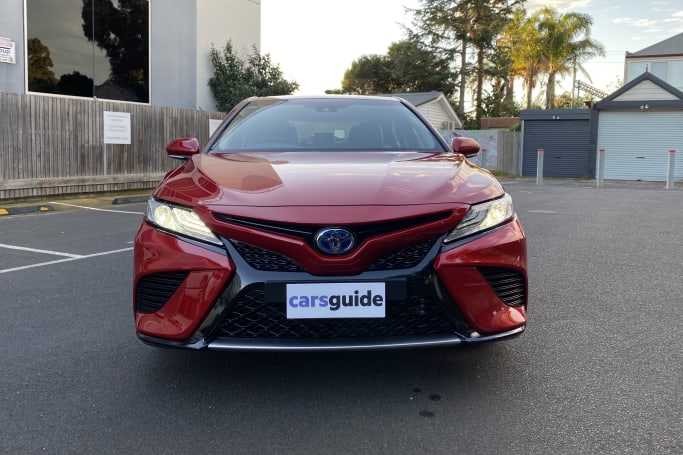
In fact, the entire front end is pretty sporty by Camry standards, with large side air intakes positioned below the wedge-like LED headlights, which contain the daytime running lights. Even the bonnet above is heavily creased, so you know the SL hybrid means business.
Around the side, the Camry is less remarkable, although its uneven glasshouse and sharp belt line do add some visual intrigue.
The SL hybrid’s 18-inch alloy wheels have a multi-spoke design that tries to inject more sportiness, but a traditional silver finish leaves them looking relatively flat.
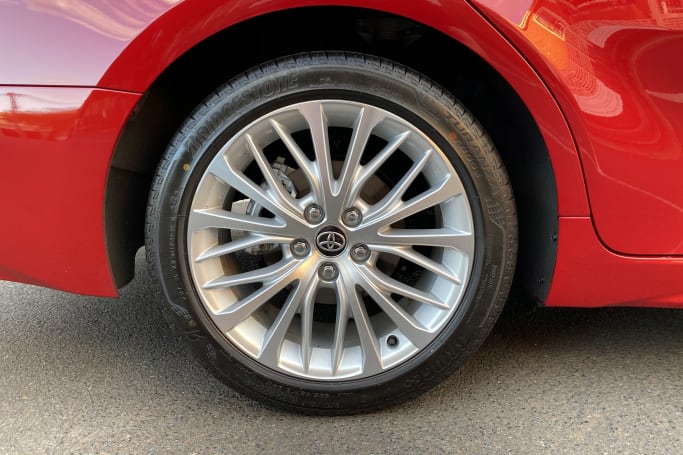
At the rear, the Camry is at its most alluring, with its LED tail-lights linking up unusual black plastic inserts that appear to mimic side air intakes. They’re pointless but kind of cool?
The SL hybrid goes a step further with a bootlid spoiler, while the bottom of its bumper is designed to look like a diffuser – something you’d never expect from a Camry.
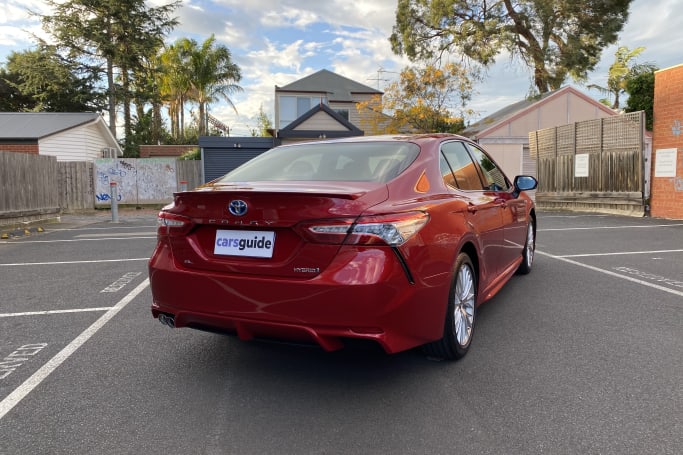
Look a little closer, though, and you’ll notice the SL hybrid only has two exhaust tailpipes when its four-cylinder and V6 siblings get four. This means its ‘diffuser’ looks incomplete on the right side.
Inside, the Camry isn’t anywhere near as exciting, although it is surprisingly premium, which is welcome.
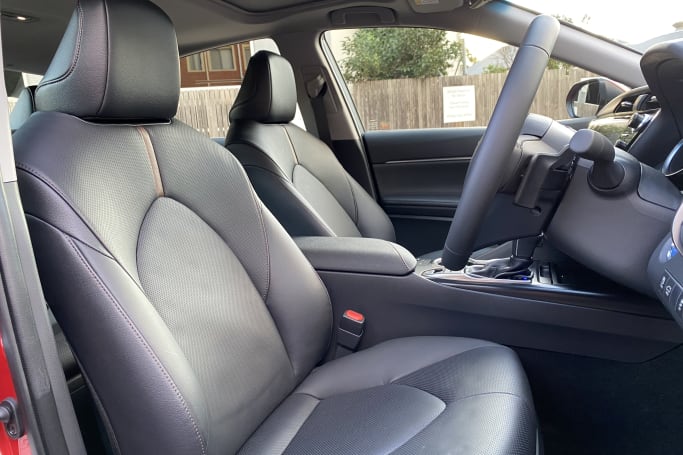
Soft-touch plastics are used for the upper dashboard and door shoulders, while the SL hybrid’s leather-accented upholstery covers its seats, steering wheel, gear selector, armrests, door inserts and middle dashboard.
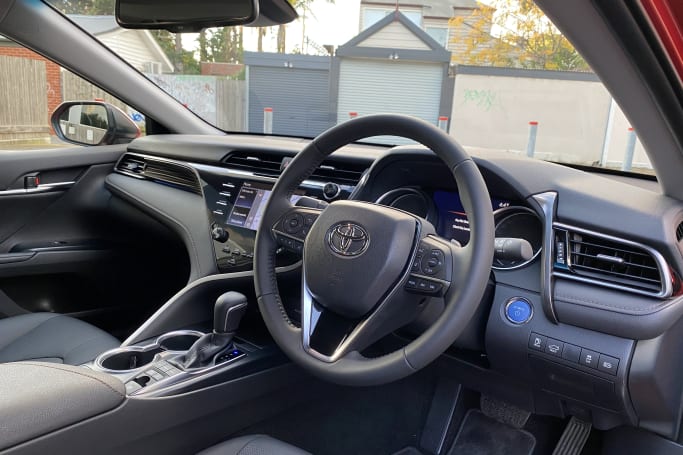
Hard plastics are, however, used for the lower sections of the Camry’s cabin, which can feel a little dark, although bright silver accents add some colour, while sporty dark metallic trim is more prominent.
The SL hybrid does have a rather unusual brown insert on the passenger side of its dashboard. It’s glossy and has a vertical pattern. If there’s one material selection we’re unsure of here, it’s that one.
The Camry’s cabin is otherwise fairly conservative in its design, with the exception of the swoopy centre stack and console.
Not sure what’s going on there, but the SL hybrid’s 8.0-inch touchscreen, positioned in the middle of the mess, is easier to make sense of.
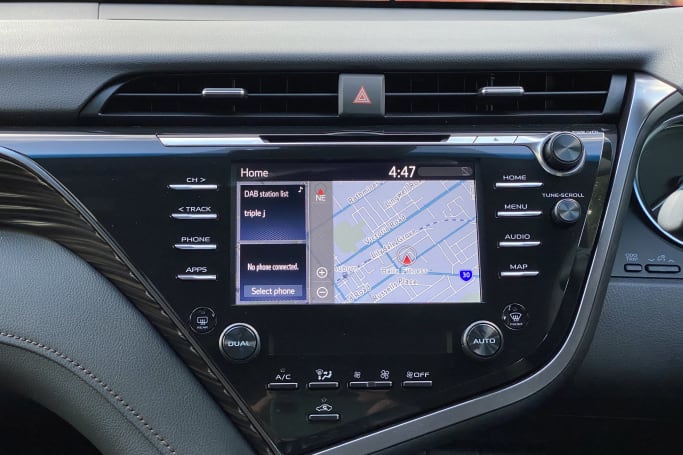
The multimedia system powering it is average in design and functionality, though. Taking advantage of its Apple CarPlay and Android Auto support is the best option.
The instrument cluster houses a traditional tachometer and speedometer, split by a 7.0-inch multi-function display, which serves up all the relevant information, plus a bit more, to the driver.
Better yet, there’s also a windshield-projected 10.0-inch head-up display that's large and in charge. So much so you rarely have to take your eyes off the road.
